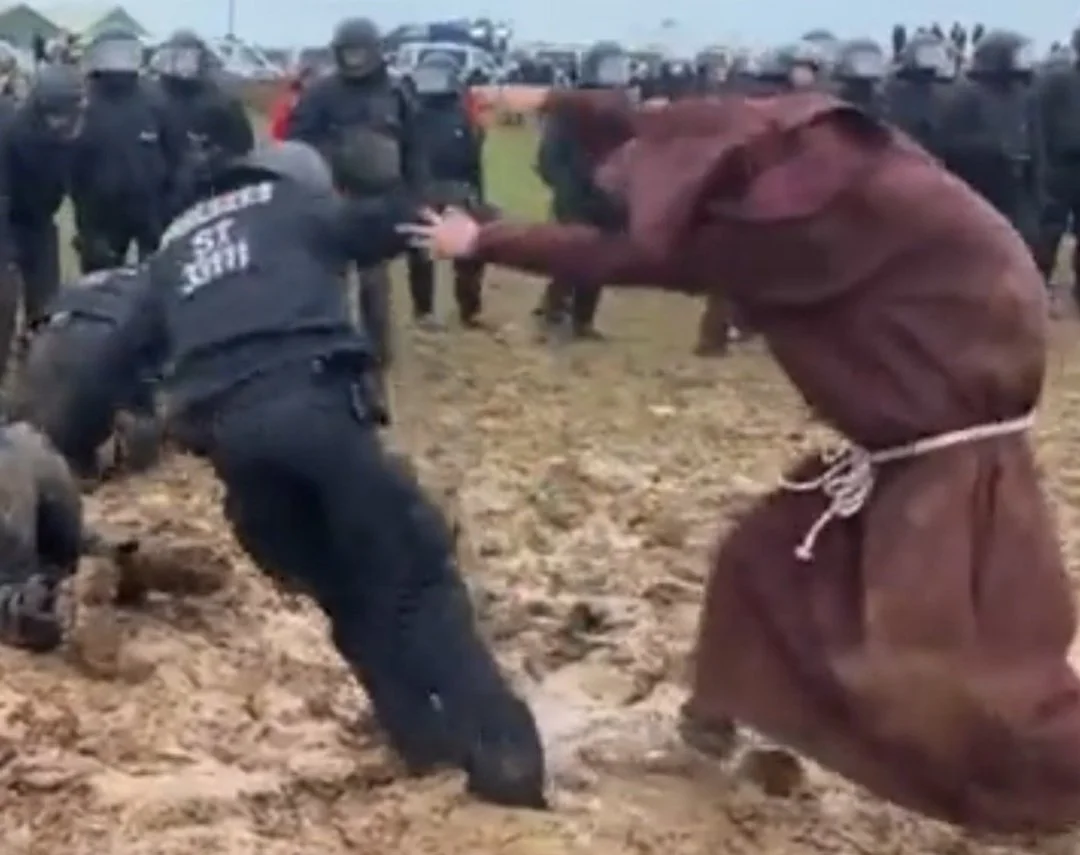That really depends on the language pair. Even a big language like Chinese has a lot of interesting stuff on github that never gets translated because the number of people can and are willing to translate isn’t that high.
- 3 Posts
- 9 Comments
Fixed! Thanks for pointing that out.
It’s one of the odder methods I’ve come across that actually seems to have good results. I guess at its core, it’s just reading and comparing bilingual texts, which is hardly new, but I think you have to have some books you really enjoy reading.
The ability to do it for a long time is a big advantage over LWT/LingQ, I think. Even when it’s just a click or two, looking things up really breaks my flow and makes it harder to concentrate. I use LWT (or actually FLTR now, but same principle) for shorter articles and things like that.
I used to use Unilang a lot. Looks like my account is from 2009. I had no idea it was still going, but that’s great to hear. I’ll definitely put it on the sidebar and come check it out.

 3·2 years ago
3·2 years agoI’m a farmer. I’d rather not get too specific on the internet, but I have an orchard and grow fruit. When I started planting, everyone from the old guys nearby to the extension office told me I was planting the wrong varieties. I chose what to plant thinking about how crazy our weather was going to get. Not only did I pick some non-standard varieties for the area, but I diversified way more than usual. It makes harvest a bit more of a pain because it doesn’t all come in at once, but it also means that I’m far less likely to lose my whole crop to bad weather. This year makes two years in a row where I’m feeling very good about my decisions. Last year, there were a few other farms in good spots that didn’t lose their whole crops. This year, nearly the whole damn county has nothing. I had a few losses to the spring-like winter followed up with the coldest freeze in decades and a later than usual freeze, but I’m doing business as usual.
And I may be living in a desert in 10 years and it’s all a wash anyways, but having a realistic view of climate change pays off.
Supplemental Exercises
For Vocab
Sometimes, your lack of vocab is what’s holding you back more than anything else. When that happens, you need to give your vocabulary a boost. Ideally, you’re learning most of your vocabulary through your Learning Strategies or Practice Activities, but sometimes, for whatever reason, you just feel like you don’t know any words. There are a few ways to remedy that.
Further reading: 1
A. Flash cards
Put L1 on one side, L2 on the other. Some kind of spaced repetition system makes this much more efficient. You can build your own flashcards or download premade decks in Anki, or use some of the courses on memrise. Clozemaster is a new option that functions like flashcards, but uses cloze deletion. The big advantage there is that you see the word in context.
B. Word lists
I’m addicted to screens, so I’ve never personally used word lists and don’t feel qualified to talk about them. Some people swear by them, though. Follow the links on this page to learn more about it.
For Pronunciation
For getting native-like intonation, shadowing is one of the best techniques out there. Your textbook, audiobooks, whatever you can find, shadow it. When you hear a native speaker say something differently than how it would have sounded if you’d said it, shadow it. But even if you’re using a Learning Strategy that’s pronunciation heavy, chances are there will be at least a couple of sounds you have trouble producing.
That’s where minimal pair activities come in. If you’re learning English, you may struggle with distinguishing the words ship and sheep. They sound the same, with just one sound being different. Get audio for both words from Forvo or somewhere else, play them randomly, say which word it is, and check to see if you’re right. Do it over and over until you get it. Then switch to bit and beet. Then sit and seat, and so on and so forth. Some people like to set these up as flashcards, but I generally just put it on shuffle in vlc. Only when you can hear the difference should you try to produce the sound. It’s important that you can recognize whether the sound’s correct or not when it comes out of your mouth. As far as actually getting unfamiliar sounds to come out of your mouth, sitting around and jabbering to yourself until it happens seems to be the way it usually works out in the end.
Practice Activities
Learning a language is like learning an instrument. You practice for countless hours until it’s automatic. But like an instrument, you have to know something to practice before practicing is any use to you.
Practically, for you the language learner, this means that practice activities shouldn’t be used as your main sources of learning until you can understand enough to learn by context. If you’re a Spaniard learning Catalan, you might be able to jump right in and learn primarily from the practice activities from the get-go, like a guitarist learning the bass. If you’re learning an entirely foreign language like Chinese or Korean, it may be years before Practice Activities become a more effective use of time than the Learning Strategies for Beginners.
For most learners, it’s best to start with Learning Strategies and slowly incorporate more and more practice as you improve. For a language like Spanish or German, you may be able to rely completely on practicing to continue improving within six months or a year. You could continue more directed learning methods if you want, but you don’t have to. If you’re learning Vietnamese, it’ll be a couple of years, probably more. That’s not to say don’t practice at the beginning! Practice is always good, but at the beginning, don’t practice at the expense of activities that are designed to increase your knowledge of the language, i.e. the Learning Strategies. It will slow you down and can be demotivating.
By the time your learning consists mostly of practice, you’ve probably figured out what works for you already. Like socially focused learning methods, there is no shortage of information about these methods on the internet if you want to know more. Some good options for practice are:
- Watching TV shows and movies
- Extensive reading / Extensive listening – Extensive reading is focused on the content. Intensive reading is focused on the language. Be careful not to think you’re doing LR while you’re doing extensive reading instead. Also, extensive reading is one of the absolute best ways to build vocabulary. The more you understand already, the better.
- Listen to music
- Talk or chat with people – Again, be aware of how much you’re actually learning here. As an advanced student, if you always talk about the same stuff with the same people this isn’t really that helpful.
- Self-talk – Talk to yourself. Practice generating sentences on the fly. Give yourself impromptu speech topics in your L2. Prepare for conversations by playing them out yourself. This is great for people who get nervous when they are put on the spot and have to actually speak the language they’ve been learning.
Pitfall to avoid: Blind Immersion. It’s easy to fall into this trap. Why haven’t I learned anything? I’ve been in Spain for five years and can’t say buenos dias, I thought immersion was supposed to be the best way to learn a language! Remember: Practice is not learning! You can learn a lot by practicing, but only if you can understand a good bit of it already. You can’t have a conversation without a foundation to build on. Finding the right balance of study and practice is key. Do both, and if you’re not sure what to do, lean more towards studying.
Conclusion
There are nearly endless ways to mix and match these methods into different activities and curricula, but hopefully this gives unsure learners some places to start figuring out how they learn best. Remember that the most important thing is how much time and effort you put into learning.
3. 10,000 Sentences
The idea behind this method is that if you can read and understand 10,000 sentences in a language, you can understand most anything. Like the LR method, 10k is based around the idea that you large amounts of comprehensible input is what determines a learner’s success. This, along with Grammar Translation, is one of the oldest language learning methods out there. It works, but it’s difficult to implement correctly and efficiently.
One modern approach, popularized by Antimoon and later AJATT, is to immerse yourself in the language (read books, watch TV, etc.), pull interesting sentences from things you read or hear (called sentence mining), and put them into flashcards. L2 sentence on the front, English (L1) and any notes you might need on the back. You learn the words and grammar through sentences on your flashcards, and AJATT recommends 10,000 hours of immersion (what I am calling Practice Activities) to go along with your 10,000 sentences. This works, but there are more efficient ways to go about it. This method includes no intensive listening, which slows it down significantly, and mining your own sentences takes up a lot of time. Proponents argue that mining the sentences is part of the learning process, and it is, but the copying, pasting, and finding sentences that you can understand as a beginner all take time that could be spent doing something that involves more practice as well.
Why bother explaining this method at all, if it’s so inefficient? For one, some people legitimately like learning this way. A Learning Strategy you enjoy will work better for you than a Learning Strategy you don’t. Secondly, the core concept is sound, and there are very good ways to adapt and combine this method with other methods to make it work. Instead of explicitly studying grammar, you’re learning sentence templates that you can swap around to produce the sentences you want.
Pulling sentences from textbooks and putting them into flashcards is much quicker provides sentences that progress from easier to harder. Cut up your book’s audio files and put them on the flashcard using a tool like Anki (front:audio → back: L2 and English (L1)), and then you get intensive listening practice at the same time. If you are learning a language with a difficult script like Chinese and Japanese, having two separate cards, one with the written sentence on the front and one with the audio on the front, is an effective strategy. Shadow the audio when the flashcard comes up, and you’ve got pronunciation practice as well. Add some cloze deletion cards for unknown words, and you train your active recall. Like with any method, you still need to supplement with lots of Practice Activities, but that’s a method that can hold its own with any of the others on this list. (Note: This is my personal favorite method for difficult languages)
You can also combine this idea with subs2srs, a program that makes audio or even video flashcards from movie files and their corresponding English (L1) and L2 subtitle files. Explaining how to use subs2srs is outside the scope of this guide, but the end result is that you can make thousands of audio flashcards from your favorite movies without having to cut up or type out the cards yourself.
A discussion of 10k wouldn’t be complete without discussing Glossika’s take on the method. Glossika doesn’t offer more than 6000 sentences for any language, but the principle is the same. It includes the sentences, progressing from less to more difficult; audio files which are great for shadowing; plus pronunciation guides in IPA. It’s a good compromise between 10k and Assimil-style shadowing. It is, like its uncle 10k, more comprehensive and will take you to a higher level than Assimil, but it has no grammar notes or explanations and requires a good bit more autonomy on the learner’s part.
Pros:
- Remains effective into intermediate and advanced levels
- Content interesting to you (from sentence mining or subs2srs)
- Highly adaptable. The principle that knowing a lot of sentences means knowing a lot of vocab and grammar generally works and can be combined with other methods.
- Free (except Glossika or buying movies especially for that purpose)
Cons:
- Glossika and movies cost money
- Difficult to execute correctly. Not as difficult as LR, but you can slow down your learning a lot trying to figure out how to effectively mine sentences and set up flashcards
- Overkill for easier languages. You probably don’t need 10,000 sentences to start engaging with native material in Spanish. 10K is a better choice for more difficult languages.
- Does not necessarily provide as much practice as other Learning Strategies (though it can be modified to mitigate this disadvantage, or you can just spend more time doing Practice Activities)
Further reading: 1, 2, 3, 4, 5
4. Grammar Translation
This was the go-to method for teaching Europe’s literate classes for centuries, possibly longer. It’s not that popular these days, but it still works, even if it’s a bit dry and inefficient. The Grammar Translation method treats language as a sum of its vocabulary and grammar. If you know the vocab and the grammar, you should be able to put together a sentence. It doesn’t necessarily include any listening or pronunciation practice, which means there aren’t many opportunities to make the language automatic, which is probably your goal. Nobody wants to sit around and flip through declension charts and vocabulary lists in their head to be able to understand or make a sentence. And when you try to produce sentences, they’re going to sound like early iterations of machine translators, when they went word by word.
Nobody wants that, except Classics majors and other people learning languages for purely academic purposes. If your only goal is reading, you can learn to translate fast enough to understand what you need to read, and eventually the reading will become automatic. It’s effective because you can more or less entirely skip the Practice Activities outlined below. Sure, you may go your whole career and never be able to string together two sentences in Latin, but you can read it, and that’s what you want. Good examples of books which still rely mostly on this method are Hansen and Quinn’s Greek: An Intensive Course and Wheelock’s Latin.
Elements of Grammar Translation are found in more modern courses focused on modern, spoken languages, as well. The learning in everyone’s favorite language app, Duolingo, is still fundamentally the Grammar Translation method at its core. Learn vocab, learn grammar, put it together like a puzzle. Duolingo has made some changes like including audio, and its grammar instruction is more explicit in some courses than others.
Pros:
- You don’t have to bother practicing speaking, listening, or writing.
Cons:
- No practice
- Pretty much everything else
5. Teachers
I’m going to keep this segment short, because there’s not shortage of places to read about how to learn a language from other people. I’m lumping everything that involves another human being teaching you something into this category.
The most straightforward way to learn from a teacher is to hire a teacher. Find one you like, and don’t be afraid to tell them what you want and why you’re learning. If they aren’t being responsive to your goals, pick a different teacher. Cons: It costs money, and the teacher may not be good.
You could also try to do a language exchange. The first problem with this is that it’s a little inefficient, because you have to spend half your time helping them. If you enjoy that, then it’s not an issue. The second problem is that even well-meaning native speakers aren’t necessarily good teachers. It will probably work if they’re patient and willing to try, though. Humans are shockingly good at communicating when they want to, even if they don’t share a language at all. How efficient this method will be depends a lot on you and the dice roll that is finding a good language partner.
Getting unsuspecting natives to teach you can work, as well. The actual learning of vocab and grammar comes mostly from attentively listening to other people and getting things from context. To give an actionable example, if you find ordering stuff at the bakery very confusing in Germany, stumble through ordering a coffee, sit near the counter, and listen to people order until you figure out what questions the bakers ask and how people respond. Keep in mind, though, that this only works if you know a few words already, or there are plenty of cognates in every day vocabulary. This would be much less effective or more difficult as a true beginner in Vietnam.
I know I’m not doing justice to these methods, but it’s easy enough to google. Any kind of two-way interaction with other human beings is going to be practice, and there’s usually enough context that you learn new things too. The only other warning I have is to pay attention to whether you’re actually learning new things, or just practicing what you know. Do too little of either and you’re likely to stagnate.
I don’t really care for the flex nibs, either. To get that nice line variation, I haven’t found anything I like better than the Pilot soft extra fine nib. It doesn’t guzzle ink, it’s not nearly as soft as some of nibs marketed as flex, and really writes very normally unless you want it not to.




Their argument is pretty much that you just move the problem to other places, which is true for pretty much any environmental policy. Emissions restrictions? Move the factory to Vietnam. It’s too expensive to dispose of toxic waste properly? China doesn’t care that much. Not allowed to use modern farming techniques? Grow it in Brazil. They don’t care.
It’s all very shortsighted.